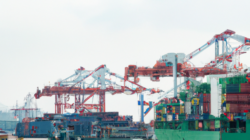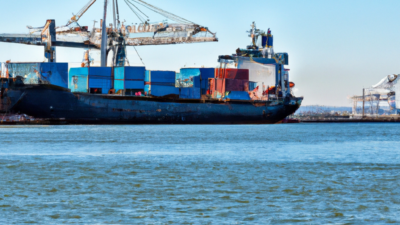**Understanding the Dynamics of the Commodity Market in India**
The commodity market in India, a vital segment of the nation's financial landscape, serves as the backbone for the trading of essential goods and raw materials. From agricultural products like grains, spices, and cotton to precious metals such as gold and silver, the Indian commodity market provides a robust platform for buyers and sellers to engage in trade. This dynamic market not only influences the prices of everyday goods but also plays a crucial role in shaping the economic policies and strategies of the country.
In this article, we delve into the intricate workings of the commodity market in India, exploring its structure, the key players involved, and the regulatory framework that ensures its smooth functioning. We will also address the impact of global trends and local factors on commodity prices, offering insights into how traders and investors navigate this complex yet fascinating domain. Whether you are a seasoned market participant or a curious observer, this comprehensive overview aims to shed light on the mechanisms that drive the Indian commodity market, highlighting its significance in the broader economic context.
Sure, here's a content outline for an article on "How the Commodity Market Works in India":
“`html
<!DOCTYPE html>
<html lang="en">
<head>
<meta charset="UTF-8">
<meta name="viewport" content="width=device-width, initial-scale=1.0">
<title>How the Commodity Market Works in India</title>
<style>
body {
font-family: Arial, sans-serif;
line-height: 1.6;
margin: 20px;
}
h2 {
color: #2c3e50;
}
p {
margin: 10px 0;
}
ul {
margin: 10px 0;
padding: 0 20px;
}
</style>
</head>
<body>
<h2>Introduction</h2>
<p>The commodity market in India plays a pivotal role in the country's economy, providing a platform for trading in various commodities such as agricultural products, metals, and energy. Understanding how this market functions is crucial for investors, traders, and policymakers.</p>
<h2>Types of Commodities Traded</h2>
<p>In India, commodities are broadly classified into three categories:</p>
<ul>
<li><strong>Agricultural Commodities:</strong> Includes crops like wheat, rice, cotton, and spices.</li>
<li><strong>Metal Commodities:</strong> Encompasses precious metals like gold and silver, as well as base metals like copper and aluminum.</li>
<li><strong>Energy Commodities:</strong> Covers crude oil, natural gas, and other energy sources.</li>
</ul>
<h2>Key Commodity Exchanges</h2>
<p>India has several major commodity exchanges where trading takes place:</p>
<ul>
<li><strong>Multi Commodity Exchange (MCX):</strong> The largest commodity exchange in India, primarily dealing with metals and energy commodities.</li>
<li><strong>National Commodity & Derivatives Exchange (NCDEX):</strong> Focuses mainly on agricultural commodities.</li>
<li><strong>Indian Commodity Exchange (ICEX):</strong> Known for trading in diamonds and other niche commodities.</li>
</ul>
<h2>Regulatory Framework</h2>
<p>The commodity market in India is regulated by the Securities and Exchange Board of India (SEBI). SEBI ensures fair practices, transparency, and protection of investor interests in the commodity trading sector.</p>
<h2>Trading Mechanism</h2>
<p>Commodity trading in India operates through futures contracts, which are standardized agreements to buy or sell a specific quantity of a commodity at a predetermined price on a future date. The trading process involves several steps:</p>
<ul>
<li><strong>Market Analysis:</strong> Traders analyze market trends, demand-supply dynamics, and other factors to make informed trading decisions.</li>
<li><strong>Placing Orders:</strong> Orders can be placed through brokers or online trading platforms.</li>
<li><strong>Settlement:</strong> Futures contracts can be settled either by physical delivery of the commodity or by cash settlement.</li>
</ul>
<h2>Role of Speculators and Hedgers</h2>
<p>The commodity market consists of two main types of participants:</p>
<ul>
<li><strong>Speculators:</strong> Individuals or entities that seek to profit from price fluctuations in the commodity market.</li>
<li><strong>Hedgers:</strong> Producers, consumers, and traders who use the futures market to hedge against the risk of price volatility.</li>
</ul>
<h2>Challenges and Opportunities</h2>
<p>The commodity market in India faces several challenges, including price volatility, regulatory hurdles, and limited awareness among small farmers and traders. However, it also presents significant opportunities for growth, driven by increasing demand, technological advancements, and policy reforms.</p>
<h2>Conclusion</h2>
<p>The commodity market in India is a dynamic and integral part of the economy. By understanding its workings, stakeholders can better navigate the complexities of trading and leverage the opportunities it offers. Continued efforts to enhance transparency, regulation, and market education will further strengthen this vital sector.</p>
</body>
</html>
“`













